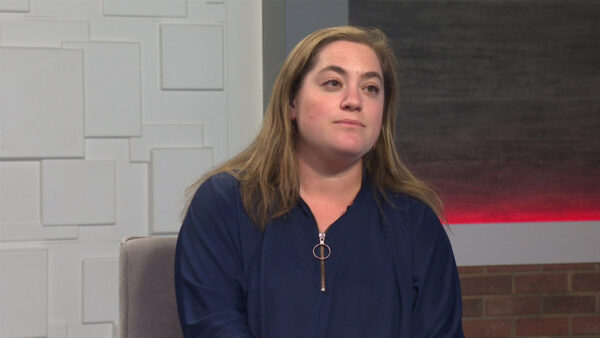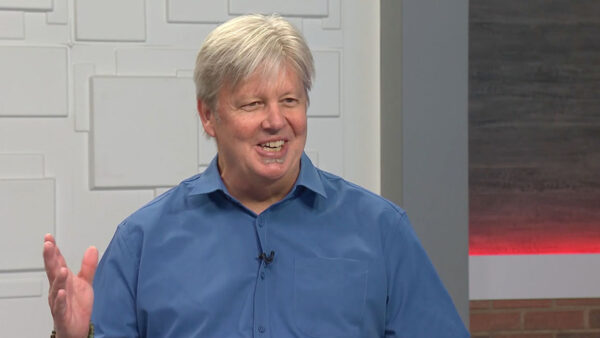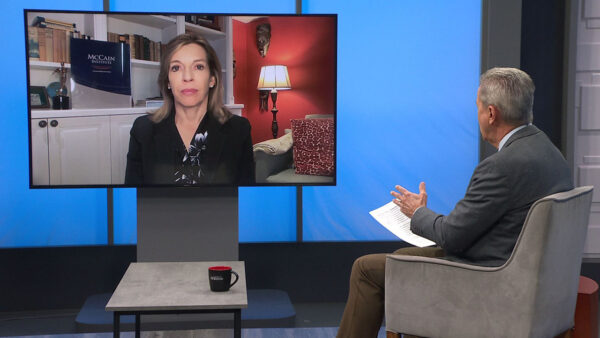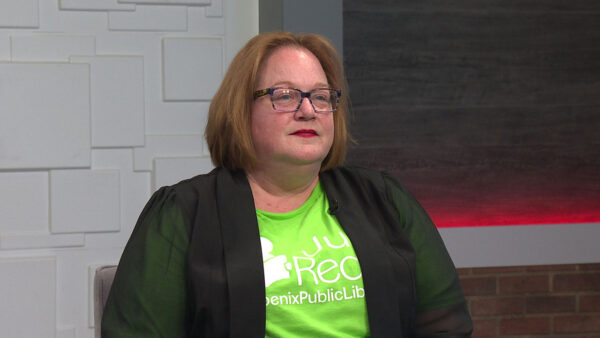Biomimicry is innovation inspired by nature that is used to create a healthier, more sustainable planet. One example is solar cells that mimic leaves. Another is paint that mimics leaf surfaces to be self-cleaning with just water. Janine Benyus co-founded the world’s first bio-inspired consultancy, which has done work for more than 250 clients. Benyus will receive the Doctor of Humane Letters honoris causa for her groundbreaking work specializing in biomimicry at the Arizona State University undergraduate commencement ceremony May 9. She will appear on Arizona Horizon to talk about biomimicry and her work.
Ted Simons: Biomimicry is an emerging discipline that looks at nature to inspire technological innovation. Janine Benyus has written six books on the topic and will receive an honorary degree for her work tomorrow. We welcome Janine Benyus to "Arizona Horizon." Good to have you here.
Janine Benyus: Thank you.
Ted Simons: Give me a better definition of biomimicry.
Janine Benyus: Innovation inspired by nature. It's a new field in which biologists sit with the people who make our world. Engineer, for instance, the engineer says, I want to design a new desalination membrane. Biologist says here's how nature takes salt out of water, describes kidneys and the glands of sea birds and fish, all the ways nature takes salt out of water. The engineer says, that's amazing and mimics it. It's literally looking to the natural world for more sustainable ways to do things.
Ted Simons: I think something that immediately comes to mind is leaves and solar cells. Maybe a connection there. I can't imagine anything better as far as photosynthesis than leaves.
Janine Benyus: That's what made me write the book in ‘97. I read solar cells were not based on leaves. They weren't based on photosynthesis. That seemed crazy for me. For 3.8 billion years life has been perfecting that. The first chapter in the book is on research at Arizona State University where they are consciously trying to emulate photosynthesis to create solar cells that can actually go all the way and take sunlight and turn it into fuel, say.
So it sounds like it's back to nature with the healthy dose of technology.
Janine Benyus: Definitely. Definitely. It's literally looking at the design principle. For instance we have problems with bacterial resistance. Superbugs in hospitals. The Galapagos shark, you look in the natural world this shark has no bacteria on its surface. You look at it and say how is that working? It's a structure on its skin. There's a company making these Nano ridges in sort of a contact paper for hospital railings and doorknobs that rappels bacteria. It's just uncomfortable for them. They don't harvest the shark or make it out of shark skin. They literally take the blueprint and make it out of whatever material we need to use.
Ted Simons: Maybe as a launch to address that particular issue. You can probably get as close to the original as you can, though.
Janine Benyus: Well, that's the key thing. If you take biomimicry beyond form you start to say, how does nature manufacture? Chemically it's very different than what we do. If you're making -- if a spider makes a web, a silk, very, very high-tech material, it doesn't heat it up. It doesn't put it in toxic solvents. It does chemistry at low temperatures in water. So the chemistry how you make it, if you get as close as that you get a miracle material, but you also save up all that energy and toxins.
Ted Simons: Is biomimicry more research and academia now as opposed to practical use?
Janine Benyus: I have been following the field since the book came out in ‘97, I have been following it since ‘90. It was mostly in academia before I wrote the book. After I wrote the book the phone started ringing, G.E., Boeing, Proctor and Gamble, people calling saying, can you bring some biologists over? We started a company called Biomimicry 3.8, for 3.8 billion years of experience. We have consulting biology I was who sit with industry. It's very much moved now. Biomedical products are doubling every year now.
Ted Simons: When G.E., Boeing, General Mills, when they call what do they want to know?
Janine Benyus: Well, they have us come in. We sign a nondisclosure agreement. They basically tell us, look, there are some very toxic things we're doing. This is where we want to change, become more sustainable in this particular area. Can you help us? So they might ask, how does nature repel water without using Teflon? How does nature do fire retardants without using brominated compounds. How does nature create color without toxic pigments? The color is great. You know peacocks? There's only the color brown in a peacock. All of those colors are created through transparent layers of carotene like your fingernails play with light. The light goes through and bounces back from the structure to create blue, yellow or Green. It's four time brighter than pigment and never fades. Companies like Sherwin Williams are saying, maybe we won't use pigments. Maybe we'll use transparent layers. Maybe your next car will have transparent layers on it that create the color you want.
Ted Simons: It sounds like herbal medicine, taking ancient ideas and saying there are some ideas that actually can work. Maybe not in a strict form, but pay attention because there's something there.
Janine Benyus: Here's the deal. These technologies evolved in the same context as we have now, which is organisms don't have much energy to work with so they are really low energy. They have to use local materials. They can't use toxins. They will destroy their habitat. At a time when we're actually trying to do thing in ways that don't degrade the planet, the best source of ideas are systems that have evolved over long periods of time to actually enhance the places they live.
Ted Simons: When you wrote the book in ‘97, were you at X in this, now you're at Y? What has changed? '97 was quite a while ago and this sounds like something that could be changing quickly.
Janine Benyus: It's an amazing thing. I won the national design award this year at the Smithsonian for -- what it was -- I won the design award that says this has a paradigm shifting effect on all design, and that means architecture, landscape architecture, industrial product design this. Idea among the people who make our world, the chemists and engineers and architects, has taken off to the point where most companies today are looking at their innovation, design tables saying, we need a biologist there. It's gotten that much of a methodology. Our company started a long time ago and we realized here's this emerging discipline. Our goal was to have a biologist at every design table. That is starting to happen.
Ted Simons: With that in mind, what's next for biomimicry? What can we look for as far as the Frontier is concerned?
I really think that two things. I think that we're going to -- biomimicry is going to be very helpful in taking carbon dioxide, which we have a lot of right now, turning it into stuff. Plants take CO2 and turn it into sugars and starches. It's already being used, people are capturing CO2 from smokestacks, using the recipe from the coral reef, from corals to create a concrete that sequesters CO2. It has a building block and a company is taking CO2 and turning it into bio degradable plastic. Half the plastic. Imagine packaging half by weight being CO2.
Ted Simons: Watch for the toxicity of something like that. You don't want it creeping out of the sidewalk or out of the plastic.
Janine Benyus: That's right. Well, CO2 is what we breathe out, but especially with that concrete that's sequestering CO over long periods of time in buildings. Makes a lot more sense than pumping it underground.
Ted Simons: Congratulations on your honor from ASU. That has to be a thrill for you.
Janine Benyus: It is.
Ted Simons: It sounds like ASU is kinds of in the forefront of this stuff.
Janine Benyus: They are looking into creating a center for biomimicry and sustainable design.
Ted Simons: Wow.
Janine Benyus: That's a conversation I'm having tomorrow.
Ted Simons: I was going to say, I know who they could talk to. Thanks for joining us.
Janine Benyus: Thanks, Ted.























